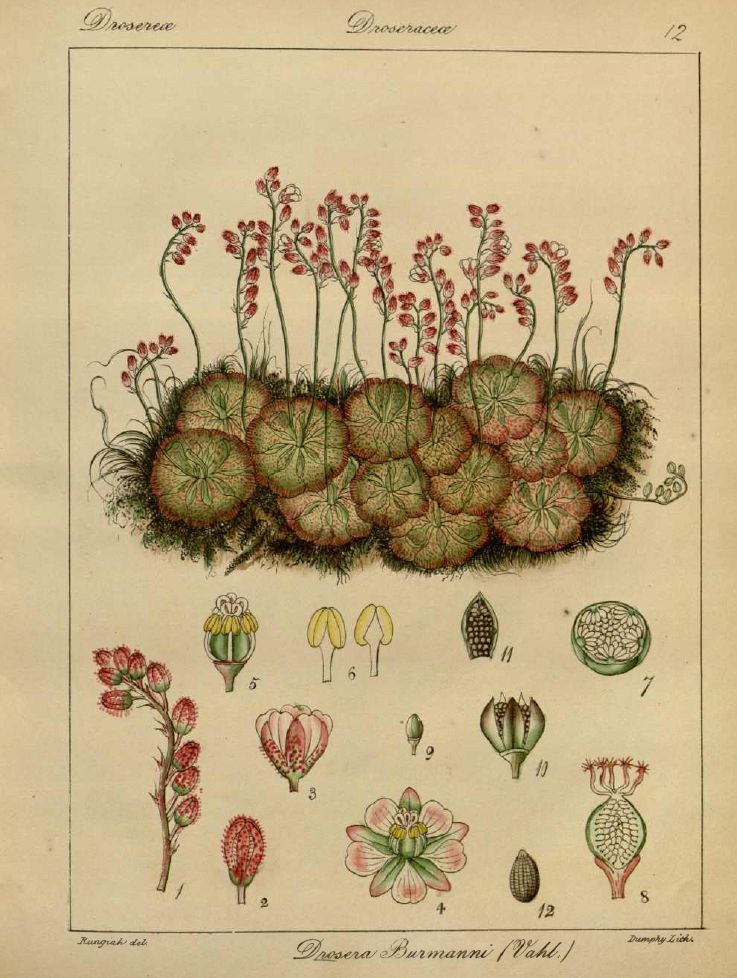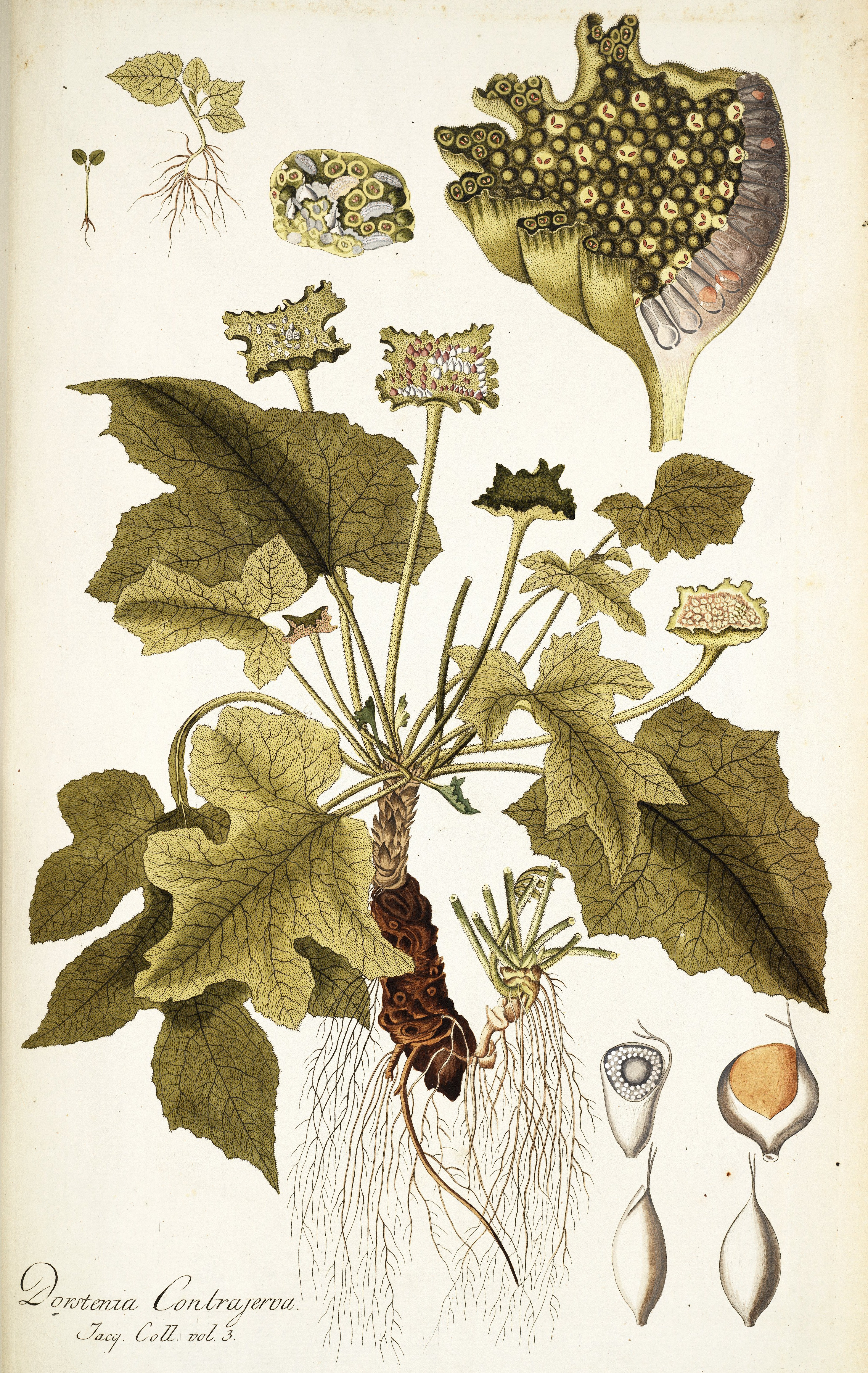|
Dorstenia Indica
''Dorstenia indica'' is a small plant species in the family ''Moraceae'' native to Southern India and Sri Lanka. It was first described by Robert Wight in 1853. ''Dorstenia indica'' is the only representative of the genus ''Dorstenia'' that grows east of Arabia and in the tropical forests of Southern Asia. It belongs to the same complex as ''Dorstenia radiata'' from Arabia, '' Dorstenia gigas'' from Socotra, and West African species such as ''Dorstenia asteriscus''. Description Herb, tufted, 7.5 to 45 cm high. Stems fleshy, sparsely hairy, tapering, curved ascending, unbranched but proliferating from the base. Procumbent, ascending after rooting. Latex white. Leaves alternate, to 9 x 2.5 cm, obovate or oblanceolate, acute, base attenuate or cuneate, membranous, distantly toothed, sparsely hirsute along the nerves beneath, nerves 8-13 pairs; petiole 1 cm long. Inflorescence axillary, solitary. Flowers numerous, arranged on a simple or lobed androgynous receptacle. ... [...More Info...] [...Related Items...] OR: [Wikipedia] [Google] [Baidu] |
Robert Wight
Robert Wight (6 July 1796 – 26 May 1872) was a Scottish surgeon in the East India Company, whose professional career was spent entirely in southern India, where his greatest achievements were in botany – as an economic botanist and leading taxonomist in south India. He contributed to the introduction of Gossypium barbadense, American cotton. As a taxonomist he described 110 new genera and 1267 new species of flowering plants. He employed Indian botanical artists to illustrate many plants collected by himself and Indian collectors he trained. Some of these illustrations were published by William Jackson Hooker, William Hooker in Britain, but from 1838 he published a series of illustrated works in Madras including the uncoloured, six-volume ''Icones Plantarum Indiae Orientalis'' (1838–53) and two hand-coloured, two-volume works, the ''Illustrations of Indian Botany'' (1838–50) and ''Spicilegium Neilgherrense'' (1845–51). By the time he retired from India in 1853 he had p ... [...More Info...] [...Related Items...] OR: [Wikipedia] [Google] [Baidu] |
Moraceae
Moraceae is a family of flowering plants comprising about 48 genera and over 1100 species, and is commonly known as the mulberry or fig family. Most are widespread in tropical and subtropical regions, less so in temperate climates; however, their distribution is cosmopolitan overall. The only common characteristics within the family are the presence of latex-producing glands in the leaves and stems, and milky sap in the soft tissues; but generally useful field characters include two carpels sometimes with one reduced, compound inconspicuous flowers, and compound fruits. The family includes well-known plants such as the common fig, breadfruit, jackfruit and mulberry. The 'flowers' of Moraceae are often pseudanthia (reduced inflorescences). Description Overall The family varies from colossal trees like the Indian Banyan ('' Ficus benghalensis'') which can cover of ground, to '' Dorstenia barnimiana'' which is a small stemless, bulbous succulent 2–5 cm in diameter that pr ... [...More Info...] [...Related Items...] OR: [Wikipedia] [Google] [Baidu] |
Dorstenia Gigas
Dorstenia gigas is a species of flowering plant in the Moraceae family. It is a succulent native to the Socotra Islands off the Horn of Africa. References {{Taxonbar, from=Q2080754 gigas Gigas may refer to: * Gigas, one of the Gigantes (Giants) in Greek mythology * Gigas (company), a Spanish cloud services company * Guigass, a snow ape like kaiju from ''Ultraman'' * ''Codex Gigas'', a medieval manuscript * gigue The gigue ( , ... Caudiciform plants Endemic flora of Socotra Taxa named by Isaac Bayley Balfour Taxa named by Georg August Schweinfurth ... [...More Info...] [...Related Items...] OR: [Wikipedia] [Google] [Baidu] |
Maharashtra
Maharashtra () is a state in the western peninsular region of India occupying a substantial portion of the Deccan Plateau. It is bordered by the Arabian Sea to the west, the Indian states of Karnataka and Goa to the south, Telangana to the southeast and Chhattisgarh to the east, Gujarat and Madhya Pradesh to the north, and the Indian union territory of Dadra and Nagar Haveli and Daman and Diu to the northwest. Maharashtra is the second-most populous state in India, the third most populous country subdivision in South Asia and the fourth-most populous in the world. The state is divided into 6 divisions and 36 districts. Mumbai is the capital of Maharashtra due to its historical significance as a major trading port and its status as India's financial hub, housing key institutions and a diverse economy. Additionally, Mumbai's well-developed infrastructure and cultural diversity make it a suitable administrative center for the state, and the most populous urban are ... [...More Info...] [...Related Items...] OR: [Wikipedia] [Google] [Baidu] |
Dorstenia
''Dorstenia'' is a genus within the mulberry family, Moraceae. Depending on the author, there are said to be 100 to 170 species within this genus, second only in number to the genus ''Ficus'' within Moraceae. ''Plants of the World Online'' currently accepts 122 species. ''Dorstenia'' species are mainly known for their unusual inflorescences and growth habits. ''Dorstenia'' is named in honor of the German physician and botanist Theodor Dorsten (1492–1552).Genaust, Helmut (1976). ''Etymologisches Wörterbuch der botanischen Pflanzennamen'' The type species is '' Dorstenia contrajerva''. Growth habit ''Dorstenia'' is unique in the family Moraceae because of the extremely diverse growth habits and forms of its species. While the majority of Moraceae are woody perennials, ''Dorstenia'' species are predominantly herbaceous, succulent, or suffrutescent perennials. Only 10% exhibit the typical woody habit of the Moraceae. The spectrum of the genus ''Dorstenia'' ranges from small ... [...More Info...] [...Related Items...] OR: [Wikipedia] [Google] [Baidu] |
Plants Described In 1853
Plants are the eukaryotes that form the kingdom Plantae; they are predominantly photosynthetic. This means that they obtain their energy from sunlight, using chloroplasts derived from endosymbiosis with cyanobacteria to produce sugars from carbon dioxide and water, using the green pigment chlorophyll. Exceptions are parasitic plants that have lost the genes for chlorophyll and photosynthesis, and obtain their energy from other plants or fungi. Most plants are multicellular, except for some green algae. Historically, as in Aristotle's biology, the plant kingdom encompassed all living things that were not animals, and included algae and fungi. Definitions have narrowed since then; current definitions exclude fungi and some of the algae. By the definition used in this article, plants form the clade Viridiplantae (green plants), which consists of the green algae and the embryophytes or land plants (hornworts, liverworts, mosses, lycophytes, ferns, conifers and other gymnosperm ... [...More Info...] [...Related Items...] OR: [Wikipedia] [Google] [Baidu] |
Flora Of India (region)
The flora of India is one of the richest in the world due to the wide range of climate, topology and habitat in the country. There are estimated to be over 18,000 species of flowering plants in India, which constitute some 6-7 percent of the total plant species in the world. India is home to more than 50,000 species of plants, including a variety of endemics. The use of plants as a source of medicines has been an integral part of life in India from the earliest times. There are more than 3000 Indian plant species officially documented as possessing into eight main floristic regions : Western Himalayas, Eastern Himalayas, Assam, Indus plain, Ganges plain, the Deccan, Malabar and the Andaman Islands. Forests and wildlife resources In 1992, 743,534 km2 of land in the country was forested of which 92 percent was government land. This amounts to 22.7 percent land coverage, compared to the recommended 33 percent of the National Forest Policy Resolution 1952. The majority ... [...More Info...] [...Related Items...] OR: [Wikipedia] [Google] [Baidu] |


